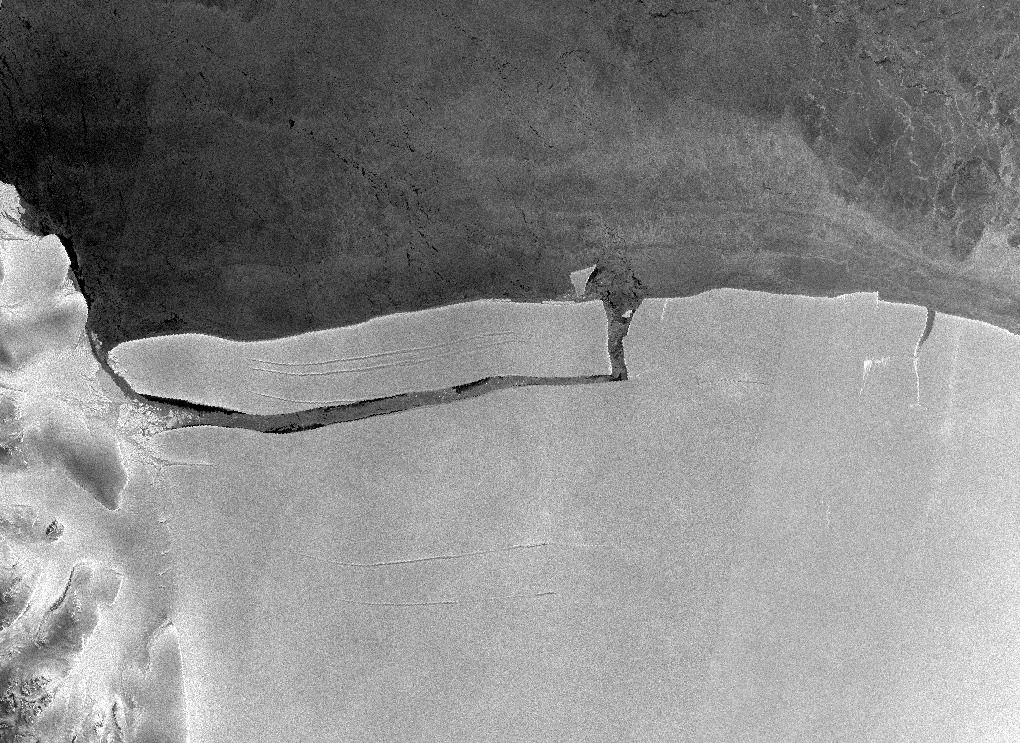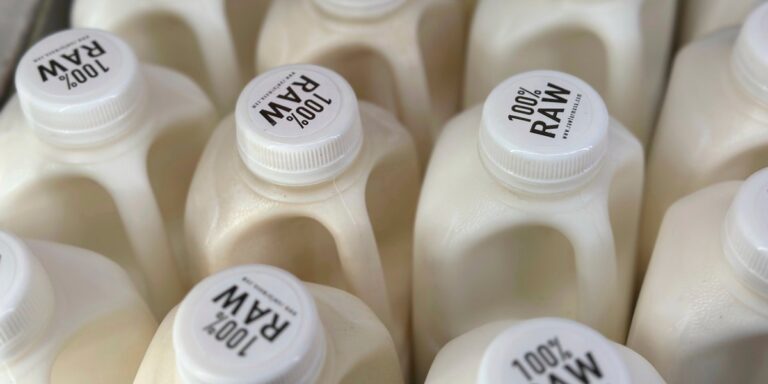Recently, a humongous chunk of floating ice broke off from an ice shelf in Antarctica to become the world’s largest iceberg.
At nearly 1,700 square miles, the iceberg, which is called A-76, is bigger than Rhode Island. It’s now sitting in the Weddell Sea, and photos of the massive iceberg have since gone viral. But while news coming out of Antarctica is often related to climate change, this isn’t an example of that.
Scientists say that icebergs forming like this one are part of a natural process, and that A-76 wasn’t caused by climate change. But it’s important to track their formation because they can be dangerous to ships navigating in the area, and for understanding Antarctica more broadly. And though there are can be up to 10,000 people on the ground in Antarctica (at least during its summer months, according to the British Antarctic Survey), to understand one of the most remote regions in the world, scientists often rely heavily on satellites in space to track much of what happens there.

A researcher named Keith Makinson at the British Antarctic Survey first identified the iceberg by looking through imagery from Copernicus Sentinel-1 satellites; then the US National Ice Center confirmed the finding. Recode spoke with Christopher Readinger, the National Ice Center ice analyst who confirmed the iceberg, who explained more about his work and why it’s important to track icebergs like this one.
The following has been lightly edited for clarity and length.
Rebecca Heilweil
First off, can you tell us a little bit about this iceberg?
Christopher Readinger
The basics: It’s about 89 nautical miles long, and I think 13 nautical miles wide. And it is currently the largest iceberg [in the world].
Rebecca Heilweil
That sounds really big. How big is that for someone who doesn’t think in nautical miles?
Christopher Readinger
I haven’t done the calculation, but it’s probably like one and a half times the size of Rhode Island.
Rebecca Heilweil
So can you just explain how an iceberg like this even breaks off?
Christopher Readinger
Around Antarctica, there are a couple of extremely large ice shelves. The Ross is the biggest. Then the Filchner-Ronne Ice Shelf is the second biggest, and that’s where this one came from. … It’s basically a floating glacier. So a shelf slowly moves out every year. Maybe a few hundred meters a year, maybe a mile every year. And then over time, there’ll be crevasses that occur in it as it moves out. And then eventually, an iceberg will just break off.
Rebecca Heilweil
Did we know this was coming?
Christopher Readinger
Not exactly. So these large ones, they don’t occur very often. … There are cracks that we can see, but you can be watching like a crack that looks really, really deep and really prominent for years and it does nothing. … So it’s really hard to tell, especially from the satellite view, which is all we have, primarily. So it’s a little bit like earthquakes, where you can’t predict them, but you know they’re going to happen at some point.
Rebecca Heilweil
So can you talk a little bit more about the satellites?
Christopher Readinger
Yeah. Antarctica is extremely remote, obviously. Especially in the wintertime, like now, there’s very few people down there. And it’s polar night; it’s dark all the time. So there’s a lot of satellites that orbit up there that we can see in the darkness and then they allow us to see what’s going on over almost all the continent all the time.
Rebecca Heilweil
Most people haven’t heard of a job called an ice investigator or ice analyst. Could you explain what you do?
Christopher Readinger
We’re operational sea ice analysts … so we work on the scale of daily to weekly sort of timeframes. We are mostly going to be supporting either science missions that are going into the ice, or weekly tracking of what the ice is doing. We look at concentration of sea ice, and ice extent, and also the thickness of the ice. So over time, as the winter goes on, the sea ice will thicken. And then in the summertime, it’ll melt away. So that’s our primary job, and we do that both in the Arctic and the Antarctic, and then we also do the Great Lakes. [Note: Sea ice is frozen seawater, while ice shelves are sheets of ice that can be attached to land. Icebergs are larger floating blocks of ice that break off from one of these shelves, a glacier, or an even bigger iceberg.]
Rebecca Heilweil
Why does it matter? Why do we care about the thickness of this ice?
Christopher Readinger
Right now is becoming the busy season for research in the Arctic. If you’re going to be leading a research operation on a ship up into the Arctic, you would want to know how thick the ice is and where it is and how it’s moving and the other things that control the ice. Because maybe your ship can’t handle that ice that’s one meter thick, so you need to know where the ice is and then avoid it if you can. So we can help determine where that is and then provide daily support and satellite imagery to show you the areas where you might be comfortable going or things you need to watch out for. Icebergs, for example.
Rebecca Heilweil
To go back to this iceberg, what happens now that it’s broken off? Should [we] be worried about this?
Christopher Readinger
The short answer is no […] it looks like the consensus of scientists out there is that this is definitely not climate change-related. It’s kind of a natural process that this ice shelf, and all the other shelves, undergo. So this is very likely a natural phenomenon that just happens every couple of decades. …
This is already floating in the ocean and also the shelf as well, so won’t have any effect on sea level as it melts. It’s like a big ice cube in your glass, where it’s already displaced the water, raised the level of the water, and as it melts it won’t change that because it’s already there, floating on it. …
And then as for this iceberg itself. Right now, there are no humans anywhere near where this iceberg is. And it doesn’t seem to be moving anywhere, anytime. …
The key for some of these is that as they break up, they form thousands — or even millions — of little, small bergs, the ones that we can’t really see from satellite imagery very well. And these are the ones that sink ships, because they’re small, and they can’t see them at night. We definitely can’t see them from the satellite.
Rebecca Heilweil
Maybe this isn’t related to climate change, particularly, but one might think that, you know, tracking these icebergs in the future will be important?
Christopher Readinger
Glaciologists are really concerned about measuring the speed of the ice shelves. And as they move forward and advance, what they’re really concerned about is if an ice shelf speeds up a lot, then it’s going to be dumping more ice into the water, and that would raise sea levels. The icebergs would be a symptom of that, not necessarily a cause or the worst part of it. So there is a lot of research and study going into that type of potential problem. Keeping an eye on the icebergs themselves helps with that work.
[If you’d like to keep tabs on where A-76 and icebergs like it are going, you can follow them online.]






